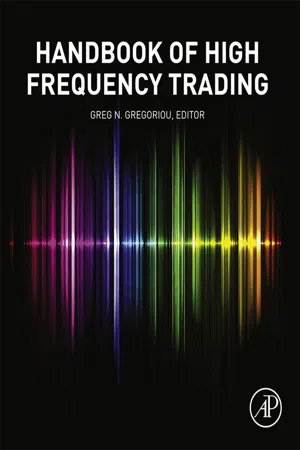
- 494 pages
- English
- ePUB (mobile friendly)
- Available on iOS & Android
Handbook of High Frequency Trading
About This Book
This comprehensive examination of high frequency trading looks beyond mathematical models, which are the subject of most HFT books, to the mechanics of the marketplace. In 25 chapters, researchers probe the intricate nature of high frequency market dynamics, market structure, back-office processes, and regulation. They look deeply into computing infrastructure, describing data sources, formats, and required processing rates as well as software architecture and current technologies. They also create contexts, explaining the historical rise of automated trading systems, corresponding technological advances in hardware and software, and the evolution of the trading landscape. Developed for students and professionals who want more than discussions on the econometrics of the modelling process, The Handbook of High Frequency Trading explains the entirety of this controversial trading strategy.
- Answers all questions about high frequency trading without being limited to mathematical modelling
- Illuminates market dynamics, processes, and regulations
- Explains how high frequency trading evolved and predicts its future developments
Frequently asked questions
Information
High-Frequency Activity on NASDAQ
Abstract
Keywords
Fleeting orders; High-frequency trading; Macroannouncement effects; Market activity; Periodic effects; Stylized facts1.1. Introduction
Table of contents
- Cover image
- Title page
- Table of Contents
- Copyright
- List of Contributors
- Contributors Biographies
- Editor Biography
- Acknowledgments
- Introduction
- Part 1. Trading Activity
- Part 2. Evolution and the Future
- Part 3. Liquidity and Execution
- Part 4. Impact of News Releases
- Part 5. Impact of Volatility
- Index